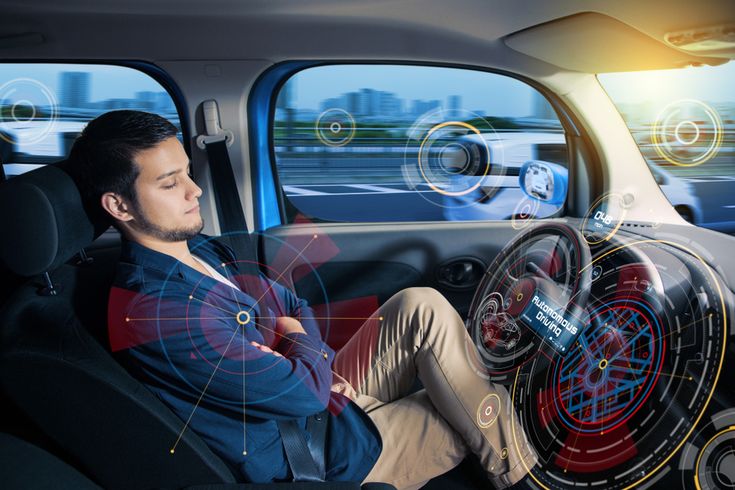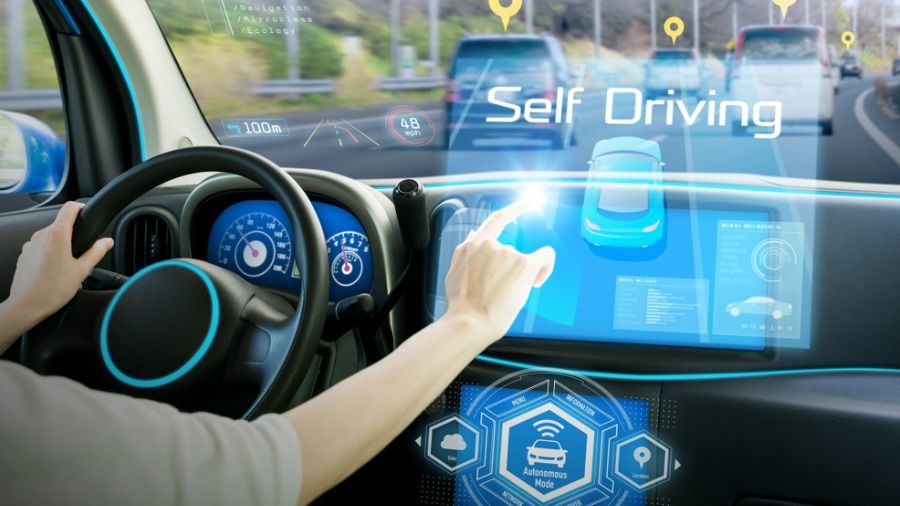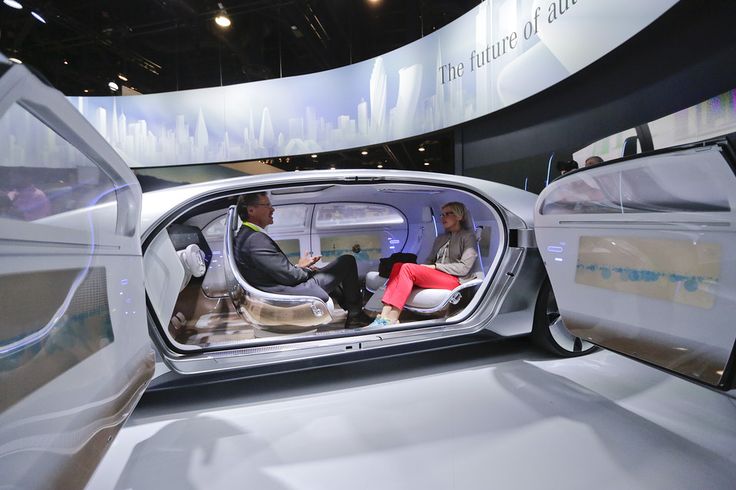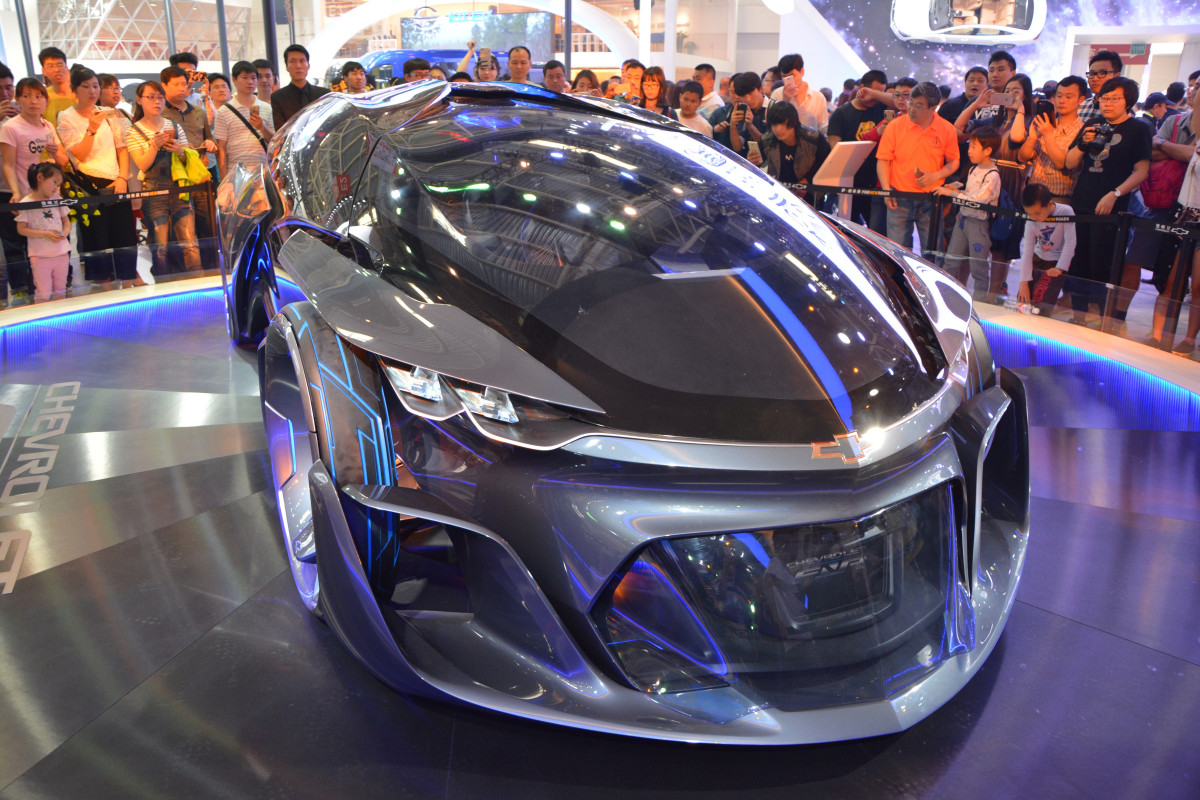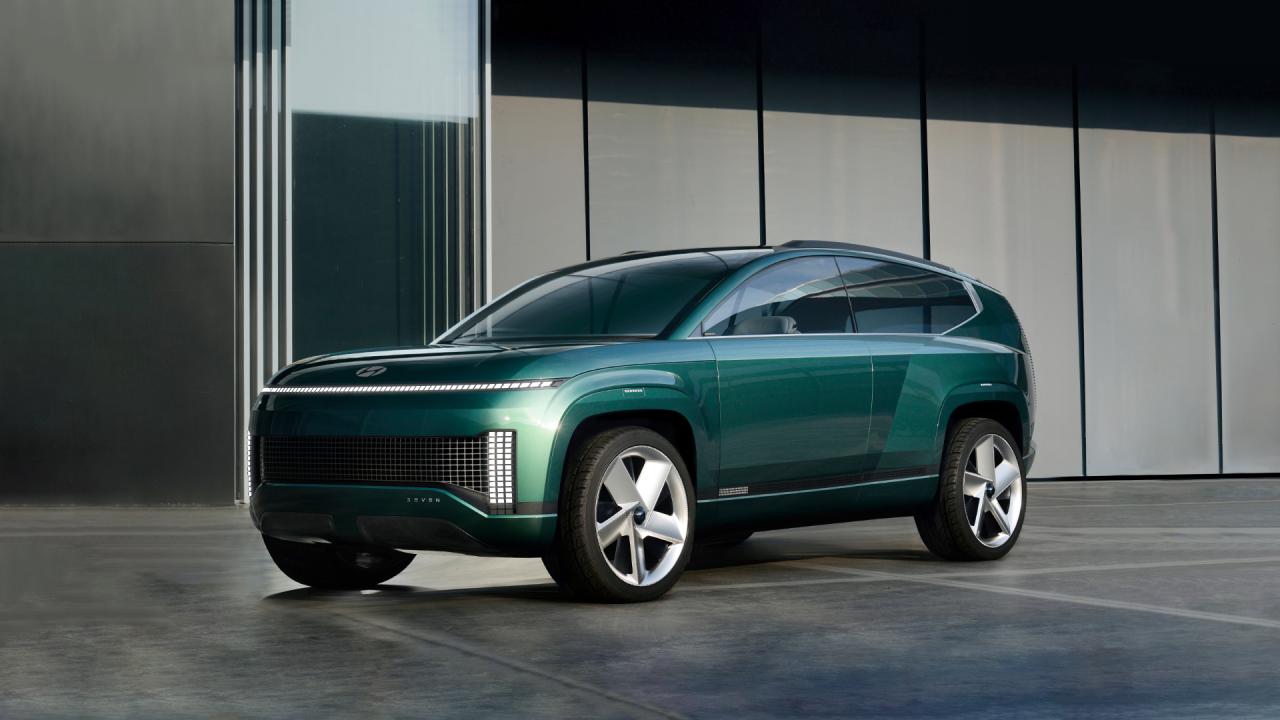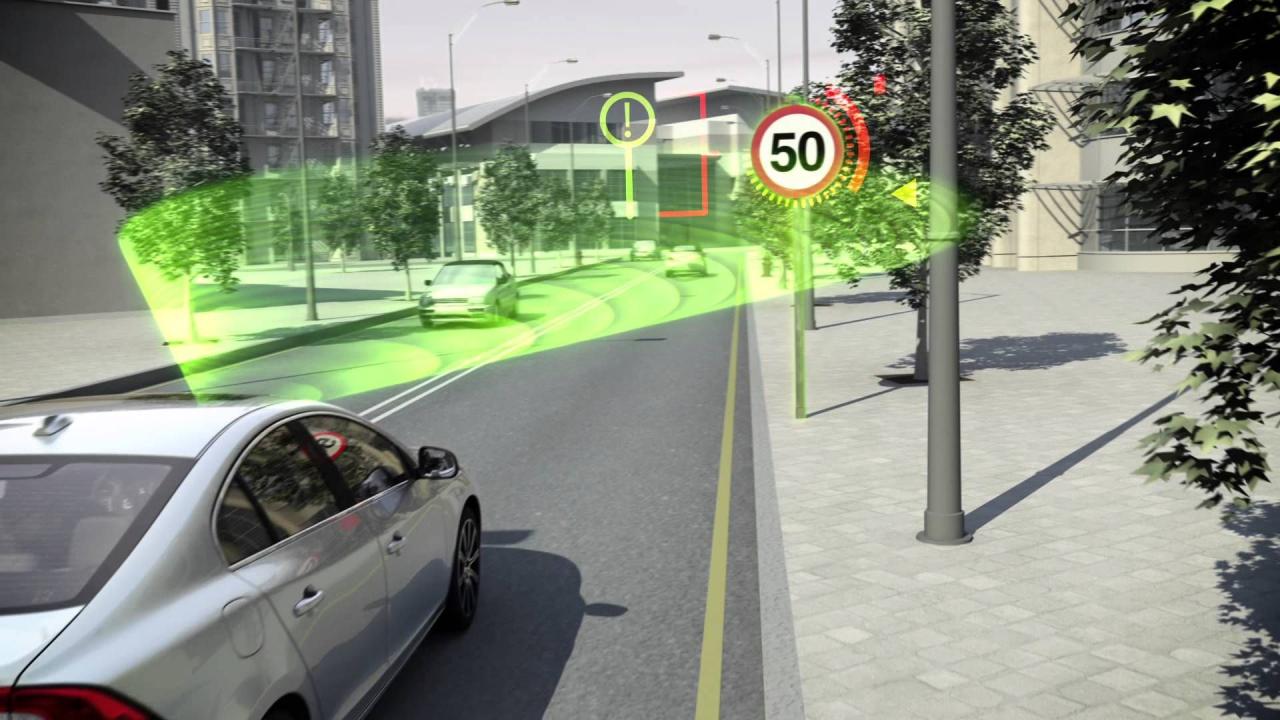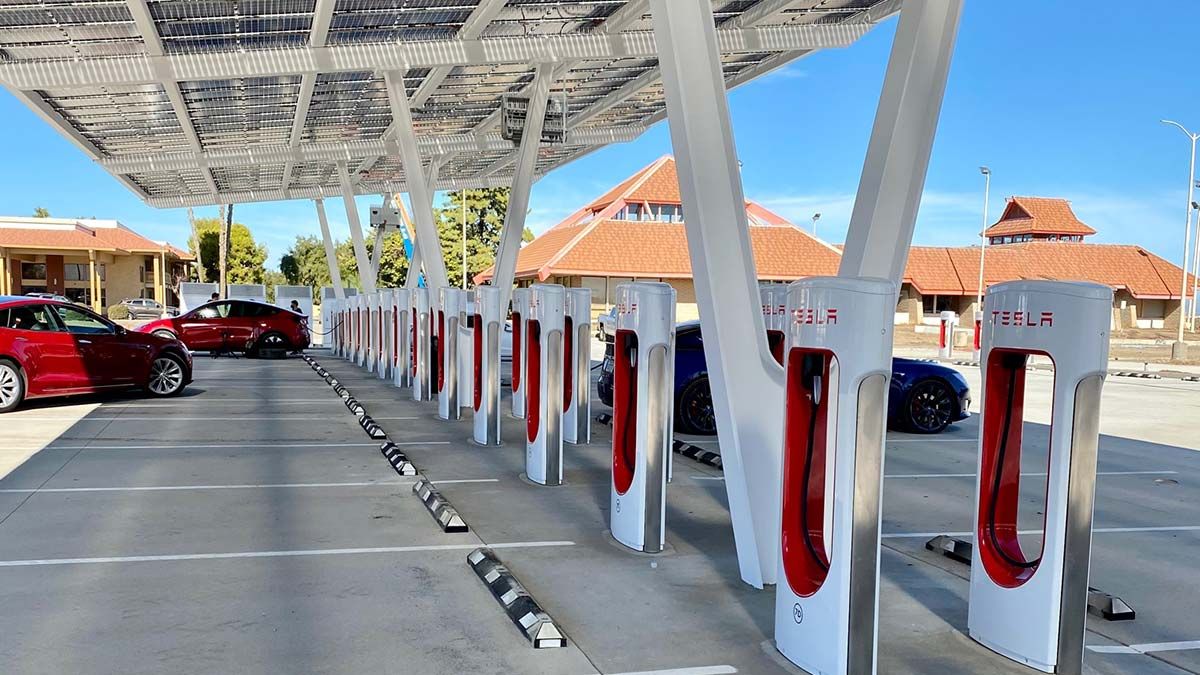The Autonomous Revolution: Driving Towards Tomorrow
The automotive world is on the precipice of its most profound transformation since the invention of the automobile itself. Self-driving technology, once a mere whisper of science fiction, is rapidly progressing from audacious concept to tangible reality, promising to fundamentally reshape how we interact with transportation, our cities, and even our daily lives. This isn’t merely an incremental improvement on existing vehicular capabilities; it’s the next big leap in human mobility, poised to deliver unparalleled levels of safety, efficiency, and convenience across the globe. From bustling urban centers like Jakarta to the vast highways of North America, the ripple effects of this technological shift are set to be monumental.
The Genesis of Autonomy: A Historical Perspective
The dream of a self-driving vehicle, or at least one that could assist its driver, dates back further than many realize. Early conceptualizations emerged in the mid-20th century, notably with General Motors’ “Futurama” exhibit at the 1939 New York World’s Fair, which envisioned automated highways. However, the true scientific pursuit began in earnest in the latter half of the century. Pioneering efforts in the 1980s, such as the Carnegie Mellon University’s ALVINN (Autonomous Land Vehicle In a Neural Network) project, demonstrated rudimentary capabilities by using neural networks to guide a van along simple paths. Simultaneously, in Germany, Ernst Dickmanns’ team at the Bundeswehr University Munich achieved significant milestones with their VaMP and VITA-2 vehicles, which could navigate public roads at high speeds in the early 1990s, even performing autonomous overtaking maneuvers.
The real inflection point, however, came in the 21st century. The DARPA Grand Challenges in the mid-2000s served as crucial catalysts. These competitions, initially held in the Mojave Desert and later in urban environments, pushed academic and corporate teams to develop autonomous vehicles capable of navigating complex, real-world conditions without human intervention. These challenges proved the fundamental feasibility of such systems and attracted an unprecedented influx of investment, talent, and public attention to the field. Companies like Google (now Waymo) spun out of these initiatives, translating academic breakthroughs into commercial endeavors. The rapid advancements in computing power, the miniaturization and cost reduction of sensors, and the exponential growth in artificial intelligence and machine learning algorithms provided the fertile ground for this revolution to take root and flourish. These early endeavors laid the indispensable groundwork for the sophisticated, highly complex systems we now see being rigorously tested on public roads worldwide, from Silicon Valley to rapidly developing tech hubs in Asia.
Understanding the Levels of Automation: A Graded Approach
To better categorize and standardize the capabilities of self-driving vehicles, the Society of Automotive Engineers (SAE) International developed a widely accepted classification system. This system, ranging from Level 0 (no automation) to Level 5 (full automation), helps differentiate between driver-assistance features and truly autonomous driving, providing clarity for consumers, manufacturers, and regulators alike.
A. Level 0: No Automation. At this foundational level, the human driver is solely responsible for all driving tasks. This category encompasses the vast majority of conventional vehicles currently on the road, where the driver manages steering, acceleration, braking, and monitoring the entire driving environment. There are no automated systems that take control of any primary driving function.
B. Level 1: Driver Assistance. The vehicle offers either steering or acceleration/deceleration support, but critically, not both simultaneously. Classic examples include Adaptive Cruise Control (ACC), which automatically adjusts the vehicle’s speed to maintain a safe distance from the car ahead, or Lane Keeping Assist (LKA), which provides subtle steering corrections to keep the vehicle centered in its lane. In Level 1, the human driver remains fully responsible for monitoring the driving environment and must be ready to take over at any moment. These features primarily aim to reduce driver fatigue and enhance comfort.
C. Level 2: Partial Automation. This is where the vehicle can control both steering and acceleration/deceleration simultaneously under specific, defined conditions. Many modern luxury and even mainstream vehicles are now equipped with Level 2 capabilities, often marketed as “hands-on” advanced driver-assistance systems (ADAS). Examples include systems that combine adaptive cruise control with active lane centering, allowing the vehicle to largely manage highway driving. However, the crucial caveat is that the driver must remain engaged, attentive to the road, and ready to take immediate control at any given moment. These systems are designed to assist, not replace, the human driver.
D. Level 3: Conditional Automation. This level represents a significant leap, often termed “eyes off” driving under specific conditions. The vehicle can perform all driving tasks and monitor the driving environment within certain operational design domains (ODDs), such as specific highways or traffic jams. In these defined scenarios, the human driver is no longer required to actively monitor the road and can, theoretically, engage in other non-driving related activities (like reading or watching a movie). However, the system will issue a request for the human driver to intervene and take back control if it encounters a situation outside its ODD or faces a challenging scenario it cannot resolve. The driver must be ready to resume control within a limited timeframe, typically a few seconds. This transition of control, known as the “handoff problem,” presents significant technical and human-factors challenges, making Level 3 adoption slower than initially anticipated.
E. Level 4: High Automation. At Level 4, the vehicle can perform all driving tasks and monitor the driving environment independently within defined operational design domains (ODDs) without any human intervention. If the system encounters a situation outside its ODD (e.g., unexpected severe weather, road closure), it will either safely bring the vehicle to a minimal risk condition (such as pulling over to the side of the road and stopping) or alert a remote operator for assistance. The human driver is not required to intervene within the ODD, and in some Level 4 vehicles, a steering wheel or pedals may not even be present. This level is most commonly seen in controlled environments like autonomous shuttles in a geofenced area or robotaxi services operating within specific city limits.
F. Level 5: Full Automation. This is the pinnacle of autonomous driving and represents the ultimate goal. A Level 5 vehicle can perform all driving tasks under all road and environmental conditions, without any human intervention whatsoever. It is capable of navigating every scenario a human driver could, including extreme weather, unmapped roads, and complex urban environments. In a Level 5 vehicle, there is no need for a steering wheel, pedals, or any conventional driver controls, as the vehicle is entirely self-sufficient. While technically feasible in some limited test scenarios, widespread Level 5 adoption remains a long-term vision, requiring substantial technological maturation, regulatory frameworks, and societal acceptance.
The Technological Backbone: How Autonomous Vehicles See and Think
The sophistication of self-driving technology relies on a complex, multi-layered interplay of hardware and software components. These systems are designed to mirror, and in many ways surpass, human sensory and cognitive abilities, enabling vehicles to perceive, interpret, plan, and act in dynamic environments.
A. Sensors: The Eyes and Ears of Autonomy. Autonomous vehicles are equipped with an array of sensors that constantly gather data about their surroundings, forming a comprehensive perception of the world. i. Lidar (Light Detection and Ranging): Often considered the “gold standard” for precise 3D mapping, Lidar systems emit pulsed laser light and measure the time it takes for the light to return. This creates highly detailed, centimeter-accurate 3D point clouds of the environment, allowing the vehicle to precisely determine distances, identify obstacles, and map its surroundings regardless of lighting conditions. It’s particularly effective for creating static maps and detecting objects in a consistent manner. ii. Radar (Radio Detection and Ranging): Radar sensors use radio waves to detect objects and measure their speed and distance. A key advantage of radar is its robustness in adverse weather conditions like fog, heavy rain, or snow, where optical sensors like cameras or Lidar might struggle. They are excellent for detecting other vehicles, especially at higher speeds, and are a cornerstone for features like adaptive cruise control and blind-spot monitoring. iii. Cameras: Cameras provide a rich stream of visual data, akin to human eyesight. High-resolution cameras are essential for identifying crucial visual cues such as traffic lights, lane markings, road signs, pedestrians, cyclists, and other vehicles. They are fundamental for object classification (e.g., distinguishing between a car and a truck) and understanding the semantic context of the driving environment (e.g., recognizing construction zones or school crossings). Advanced computer vision algorithms process these images in real-time. iv. Ultrasonic Sensors: These short-range sensors emit high-frequency sound waves and measure the time it takes for the echo to return. They are typically used for close-proximity detection, such as parking assistance, maneuvering in tight spaces, or detecting objects in blind spots. Their effectiveness is limited to very short distances, making them complementary to other long-range sensors.
B. Mapping and Localization: For an autonomous vehicle to navigate, it must know precisely where it is. High-definition (HD) maps, far more detailed than consumer-grade GPS maps, provide a pre-rendered, highly precise understanding of the road network, including lane configurations, traffic signs, pedestrian crossings, speed limits, and even the height of curbs. Global Positioning System (GPS), combined with Inertial Measurement Units (IMUs) and real-time processing of sensor data, allows the vehicle to precisely pinpoint its location on these HD maps, often with centimeter-level accuracy, a process known as localization. This continuous localization ensures the vehicle understands its position relative to known static features.
C. Artificial Intelligence and Machine Learning: This is the “brain” of the autonomous vehicle, responsible for processing the massive influx of sensor data and making real-time driving decisions. AI algorithms, particularly those leveraging machine learning and deep learning, enable the system to perform complex tasks: * Object Recognition and Tracking: Identifying and continuously tracking all dynamic objects in the environment (other vehicles, pedestrians, cyclists, animals). * Behavior Prediction: Anticipating the future movements and intentions of other road users based on their current trajectory, speed, and typical behavior patterns. * Path Planning: Calculating the optimal and safest path for the vehicle to follow, considering traffic laws, road conditions, and the predicted behavior of other agents. This involves continuous recalculation and optimization. * Decision Making: Choosing appropriate actions (accelerate, brake, turn, change lanes) based on the perceived environment and predicted outcomes. Deep neural networks, trained on vast datasets of real-world driving scenarios and extensive simulations, allow the system to learn complex patterns and make nuanced decisions, even in ambiguous situations. Reinforcement learning, where the AI learns by trial and error in simulated environments, is also playing an increasing role.
D. High-Performance Computing: The sheer volume of data generated by multiple high-fidelity sensors (often gigabytes per second) requires immense computational power to process in real-time. Specialized onboard computers, equipped with powerful GPUs (Graphics Processing Units) and custom AI chips, are designed to handle these demanding tasks. Low latency is critical; any delay in processing or decision-making could have severe consequences. These systems must be robust, reliable, and capable of operating under a wide range of temperatures and vibrations.
E. Connectivity (V2X Communication): Vehicle-to-everything (V2X) communication is an emerging technology that allows autonomous cars to communicate with elements beyond their direct line of sight, enhancing situational awareness and collaborative driving. * V2V (Vehicle-to-Vehicle): Cars can exchange information directly, such as speed, heading, braking status, or warnings about hazards ahead. This can prevent collisions and enable platooning (vehicles driving in close convoys). * V2I (Vehicle-to-Infrastructure): Vehicles can communicate with road infrastructure like traffic lights, road signs, and construction zones, receiving real-time updates on traffic flow, signal timings, or temporary speed limits. * V2P (Vehicle-to-Pedestrian/Vulnerable Road Users): Communication with smartphones or wearables carried by pedestrians and cyclists can alert both the vehicle and the individual to potential collision risks. * V2N (Vehicle-to-Network): Communication with cloud-based services for map updates, over-the-air (OTA) software updates, or remote assistance. V2X helps create a more integrated and safer transportation ecosystem.
The Promise of Autonomy: Transforming Society
The widespread adoption of self-driving technology promises a myriad of profound benefits that extend far beyond mere personal convenience, potentially transforming entire societies and economies.
A. Enhanced Safety: This is arguably the most compelling benefit. Human error, stemming from distraction, fatigue, impairment, or aggressive driving, is responsible for over 90% of all road accidents globally. Autonomous vehicles, unburdened by these human failings, possess the potential to drastically reduce collisions, saving millions of lives and preventing countless injuries worldwide. Their 360-degree continuous awareness, faster reaction times, and adherence to traffic laws could make roads significantly safer for all users – drivers, passengers, pedestrians, and cyclists alike. Imagine a future with near-zero traffic fatalities, a goal that traditional automotive safety measures alone cannot fully achieve.
B. Increased Efficiency and Reduced Congestion: Autonomous vehicles can drive with remarkable precision and consistency, optimizing traffic flow in ways human drivers simply cannot. Their ability to maintain ideal following distances, accelerate and decelerate smoothly, and communicate with each other (via V2V) can significantly reduce “phantom” traffic jams caused by erratic human driving behavior. This translates into less congestion, shorter travel times, reduced fuel consumption (or electricity usage for EVs), and lower emissions. The concept of platooning, where autonomous trucks or cars travel in close, aerodynamic convoys, could further enhance road capacity and fuel efficiency on highways.
C. Accessibility and Mobility for All: Self-driving cars have the power to democratize mobility. They can provide independent transportation for individuals who are currently unable to drive due to age (elderly), physical disabilities, visual impairments, or simply the lack of a driver’s license. This vastly enhances their quality of life, access to education, employment, healthcare, and social opportunities, fostering greater inclusivity in society. Children and teenagers could also gain independent mobility without reliance on adult drivers.
D. Economic Benefits: The economic implications are vast. Reduced accidents mean lower healthcare costs, decreased insurance premiums for drivers, and reduced vehicle repair expenses. The increased efficiency of logistics and transportation, facilitated by autonomous trucks, delivery vehicles, and even autonomous last-mile delivery robots, can lead to substantial economic gains, supply chain optimization, and the creation of entirely new business models (e.g., subscription-based mobility services, on-demand robotaxi fleets). Productivity gains during commutes, where passengers can work or relax, also contribute to economic output.
E. Urban Redevelopment and Space Optimization: The rise of shared autonomous vehicle fleets, particularly in urban areas, could significantly reduce the need for privately owned cars. This, in turn, lessens the demand for vast parking lots and multi-story car parks. Valuable urban land currently dedicated to parking could be repurposed for much-needed green spaces, affordable housing, community centers, or commercial development, leading to more livable, pedestrian-friendly, and sustainable cities. Sidewalks could be widened, and public spaces expanded.
F. Environmental Impact: Optimized driving patterns, reduced congestion leading to less idling, and the widespread adoption of electric autonomous vehicles are poised to result in significant reductions in greenhouse gas emissions and urban air pollution. This contributes directly to cleaner air, better public health outcomes, and a healthier planet. Furthermore, autonomous systems can optimize routes to be more fuel-efficient, further reducing environmental footprints.
Challenges and Hurdles: Navigating the Road Ahead
Despite the immense promise, the path to widespread autonomous vehicle adoption is not without significant challenges that must be meticulously addressed by engineers, policymakers, and society at large.
A. Regulatory and Legal Frameworks: One of the most complex hurdles is the establishment of comprehensive, clear, and harmonized regulations worldwide. Governments are grappling with critical questions surrounding liability in the event of accidents (who is at fault: the owner, the manufacturer, the software provider?), robust testing protocols, data privacy and security of collected vehicle data, and operational guidelines for autonomous fleets. Differing regulations across states, provinces, or countries can hinder mass deployment and cross-border operations. Developing international standards is crucial for global market growth.
B. Public Acceptance and Trust: Building public trust in self-driving technology is absolutely paramount. High-profile accidents, even if statistically rare compared to human-driven incidents, can severely impact public perception and foster skepticism. Educating the public about the technology’s benefits, limitations, and safety advancements is essential. Overcoming inherent human psychological barriers and skepticism about relinquishing control of a vehicle, particularly in emergencies, is a significant, ongoing challenge that requires sustained effort and transparent communication from developers and regulators.
C. Cybersecurity Risks: As vehicles become increasingly connected and software-driven, they inherently become potential targets for cyberattacks. A malicious actor gaining control of an autonomous vehicle’s systems, either remotely or through physical access, could have catastrophic consequences, ranging from privacy breaches to large-scale traffic disruption or even physical harm. Robust, multi-layered cybersecurity measures, including encryption, intrusion detection systems, and secure over-the-air updates, are critical to protect these complex systems from vulnerabilities.
D. Ethical Dilemmas: Autonomous vehicles may, in extremely rare and unavoidable accident scenarios, face “trolley problem” type dilemmas where the system must make a choice between two bad outcomes (e.g., swerve to hit one obstacle or stay course and hit another). How should an autonomous vehicle be programmed to make such life-or-death decisions? These complex ethical questions, though infrequent in practice, raise profound societal debates that require careful consideration, public discourse, and, ultimately, a degree of societal consensus on programming principles that reflect human values.
E. Adverse Weather and Unforeseen Conditions: While significant progress has been made, operating reliably and safely in extreme weather conditions remains a formidable technical challenge. Heavy snow, dense fog, torrential rain, or white-out conditions can severely obscure or degrade sensor performance (Lidar, cameras, radar), making it difficult for the vehicle to accurately perceive its environment. Similarly, navigating highly unpredictable human behavior (e.g., jaywalkers, erratic or non-compliant drivers, sudden changes in construction zones) or unusual road debris requires advanced reasoning capabilities that are still under active development.
F. Cost and Infrastructure: The initial cost of fully autonomous vehicles, particularly those equipped with expensive sensor suites and high-performance computing platforms, can be substantial, which could slow down widespread consumer adoption. Furthermore, the necessary infrastructure upgrades for a truly ubiquitous autonomous ecosystem (e.g., widespread V2X communication deployment, continuous high-definition map updates, dedicated lanes or charging stations) require significant investment from governments and private entities.
G. Job Displacement: The widespread adoption of autonomous vehicles, particularly in industries heavily reliant on human drivers like trucking, ride-hailing, and delivery services, could lead to significant job displacement. While new jobs in AI development, data management, and vehicle maintenance will emerge, society will need to implement robust planning, retraining programs, and support systems to manage this transition and ensure a just future for affected workforces.
The Future of Mobility: A Glimpse into Tomorrow
The immediate future of self-driving technology will likely see a continued, gradual rollout of increasingly advanced Level 2 and Level 3 systems in consumer vehicles. These systems will offer enhanced driver assistance features, making driving safer and more convenient in specific scenarios like highway cruising or traffic jams. Concurrently, Level 4 autonomous solutions are expected to expand rapidly in defined operational design domains. We’ll see more autonomous shuttles operating on fixed routes within campuses or urban centers, robotaxi services expanding their geofenced service areas in major cities, and autonomous delivery vehicles transforming last-mile logistics for e-commerce.
In the longer term, as technical and regulatory hurdles are systematically overcome, Level 5 full autonomy holds the potential to truly revolutionize urban planning, personal freedom, and global economic activity. Imagine a world where daily commutes are no longer a source of stress but productive or relaxing time. A world where road accidents become a rarity, and where personal mobility is genuinely accessible to everyone, regardless of their physical capabilities or age. The transition will undoubtedly be gradual, characterized by a complex, fascinating mosaic of human-driven and autonomous vehicles sharing the roads. However, the overarching direction is clear: towards a future where driving is an option, not a necessity, and where our vehicles evolve into intelligent, interconnected partners in our daily lives. The next big leap is not just about advancing automotive technology; it’s about fundamentally redefining our relationship with transportation, unlocking unprecedented efficiencies, and paving the way for a safer, more sustainable, and more connected world for generations to come.

